Is commercial art more at threat from AI than writing?
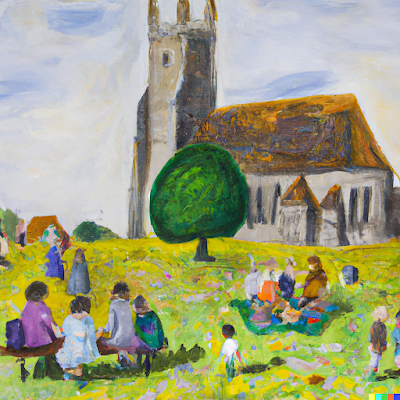 There has been quite a fuss from us writers about AI-based writing software in the form of chatbots such as Chat-GPT and Bard. However, equally impressive and insidious are the AI-created visuals from DALL-E and Bing Image Creator.
There has been quite a fuss from us writers about AI-based writing software in the form of chatbots such as Chat-GPT and Bard. However, equally impressive and insidious are the AI-created visuals from DALL-E and Bing Image Creator.The image at the top of this piece was created by DALL-E in response to the request from a friend for a picture of people picnicking in the churchyard of a medieval church in the style of Van Gogh. Now, admittedly the style is more a generic impressionist, but it's hard to argue this isn't an attractive image.
I don't think there is much threat to 'true' art. I asked my daughter, Rebecca Clegg, who is an artist - she commented:
I think AI provides both opportunities and challenges to artists. On one hand, AI could help generate an artwork that an artist would find difficult to create by hand, but it brings into question who owns the right to the artwork. Is it the artist who inputs the information or the AI? Or even the person who created the algorithm. Also would an algorithm not be limiting?
AI can help in the initial stages of ideas and support the inspiration and creation of maybe mathematically complex designs that would be difficult for an artist to produce. This helps the artist be more efficient in the production of their work as well as providing concepts not yet considered by the artist. The artist can also discern and chose between various images generated by AI and consider the limitations and applications of them as a design, I am not sure if AI knows what a good piece of art is compared to a bad piece of art?
Also art is not just about creating a visually appealing piece, its about conveying emotion and ideas on a deeper level pulled from the complexity of the human experience. AI does not have the emotional intelligence to create artwork that would resonate with an individual as it lacks unique experiences and perspectives, or even cultural backgrounds that an artist would draw inspiration from.
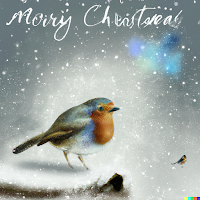 AI-generated art may be impressive and can help produce 'art' at a greater rate than an artist could, however it will never take away from the hand of the artist. The techniques and processes that take years to learn and perfect in particular mediums lead to unintentional, intuitive experiments, happy accidents, individual artistic expression and ultimately a signature that is unable to be replicated by AI.
AI-generated art may be impressive and can help produce 'art' at a greater rate than an artist could, however it will never take away from the hand of the artist. The techniques and processes that take years to learn and perfect in particular mediums lead to unintentional, intuitive experiments, happy accidents, individual artistic expression and ultimately a signature that is unable to be replicated by AI. I think what Rebecca says is true. However, she is mostly considering fine art here. And even there, arguably there is a potential for the intrusion of AI, as witness the recent win of an AI image in a prestigious photography competition. In reality, though, I suspect most professional artists are employed in commercial art fields, whether it's designing greetings cards, web imagery or even illustrating comics. For me, these are the areas where AI-generated images could pose a significant threat to employment.
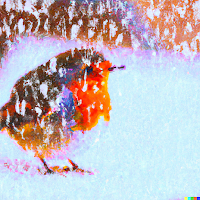 The two Christmas cards shown here were produced by DALL-E in a few seconds as a result of asking for a Christmas card with a robin in snow (above) and the same but in the style of an impressionist painting (right). It might not be great art, but I think both are just as good as plenty of the greetings cards I've seen (and bought).
The two Christmas cards shown here were produced by DALL-E in a few seconds as a result of asking for a Christmas card with a robin in snow (above) and the same but in the style of an impressionist painting (right). It might not be great art, but I think both are just as good as plenty of the greetings cards I've seen (and bought).Similarly, fellow science writer Andrew May, who has an interest in the weird and wonderful Charles Fort, decided he'd experiment with Bing Image Creator to produce a comic-form introduction to some aspects of Fort's work, shown below (click on the images to see the impressive level of detail). He does note that 'One weakness of Bing at the moment is that it can't give you any consistency from one image to the next (which is why I picked the concept for my comic to minimize the need for continuity, and why Fort changes his appearance from one panel to the next).'
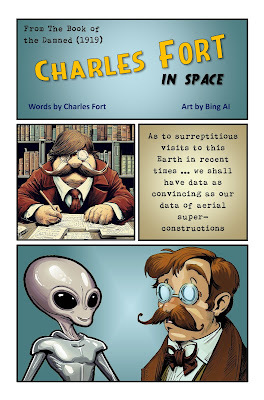 I've read quite a few graphic novels and graphic novel-style science books, such as
The Phantom Scientist
,
Prime Suspects
and
Mysteries of the Quantum Universe
. Many of these have, frankly, distinctly mediocre illustrations. I think that Andrew's comic pages are better quality than the real thing in some of these cases.
I've read quite a few graphic novels and graphic novel-style science books, such as
The Phantom Scientist
,
Prime Suspects
and
Mysteries of the Quantum Universe
. Many of these have, frankly, distinctly mediocre illustrations. I think that Andrew's comic pages are better quality than the real thing in some of these cases.Of course there are limitations here, both in the lack of consistency that Andrew mentions and in the reach of the AI: apparently, he had to specify what Fort looked like as Bing was unable to produce even a vague resemblance to Fort's distinct appearance, despite plenty of imagery online. Even so, these examples do demonstrate that commercial artists have something to worry about.
This kind of software has advanced extremely quickly in recent years and even months. For a long time, fears about AI replacing human activity has been overheated. But there is no doubt that it has the potential to replace some human activity, doing the same thing better and cheaper, just as, for example, computer typesetting displaced manual typesetting. I take Rebecca's point that AI 'art' is arguably not of the same level as the best human art - but this is also true of much commercial artwork, and as the photograph competition demonstrates, quality in art is both subjective and subject to interpretation of things that aren't actually there.
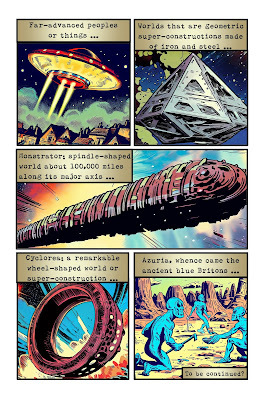 It is already clear that it is dangerous to put AI in charge of decision-making. The kind of bias and errors produced by invisible and unexplainable AI 'logic' in everything from deciding whether or not to issue a bank loan to crime prevention and the rating of teachers has been highlighted in books such as Cathy O'Neil's
Weapons of Math Destruction
. The problems there don't mean that AI can't be involved in the grunt work supporting decisions, but that it should only be employed if it can explain why a particular result was reached and if a human being is able to override its decisions.
It is already clear that it is dangerous to put AI in charge of decision-making. The kind of bias and errors produced by invisible and unexplainable AI 'logic' in everything from deciding whether or not to issue a bank loan to crime prevention and the rating of teachers has been highlighted in books such as Cathy O'Neil's
Weapons of Math Destruction
. The problems there don't mean that AI can't be involved in the grunt work supporting decisions, but that it should only be employed if it can explain why a particular result was reached and if a human being is able to override its decisions.Similarly, all the evidence is that it's dangerous to leave AI in charge of writing a piece of text without oversight as it can both be in error (as I discovered when trying the approach on a couple of science writing issues) and is quite capable, for instance, of inventing citations.
However, things are less clear with the whole business of commercial illustration. Here, perhaps, there is often less concern about accuracy. Could it be that this is the first clear instance where this kind of technology will soon have totally transformed an industry?
I'm no artist (Rebecca will definitely agree with that statement), but like most people, to conform to the cliché, I know what I like. And it's people like me, not necessarily professional art experts who buy most artwork. If I'm honest, I'm not sure that we will be able to distinguish that human touch that may signify great art.
See all of Brian's online articles or subscribe to a weekly digest for free here



